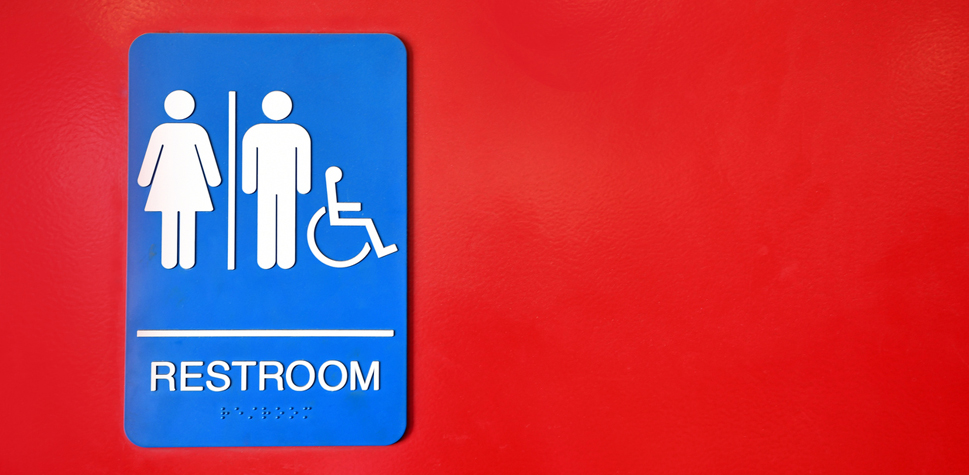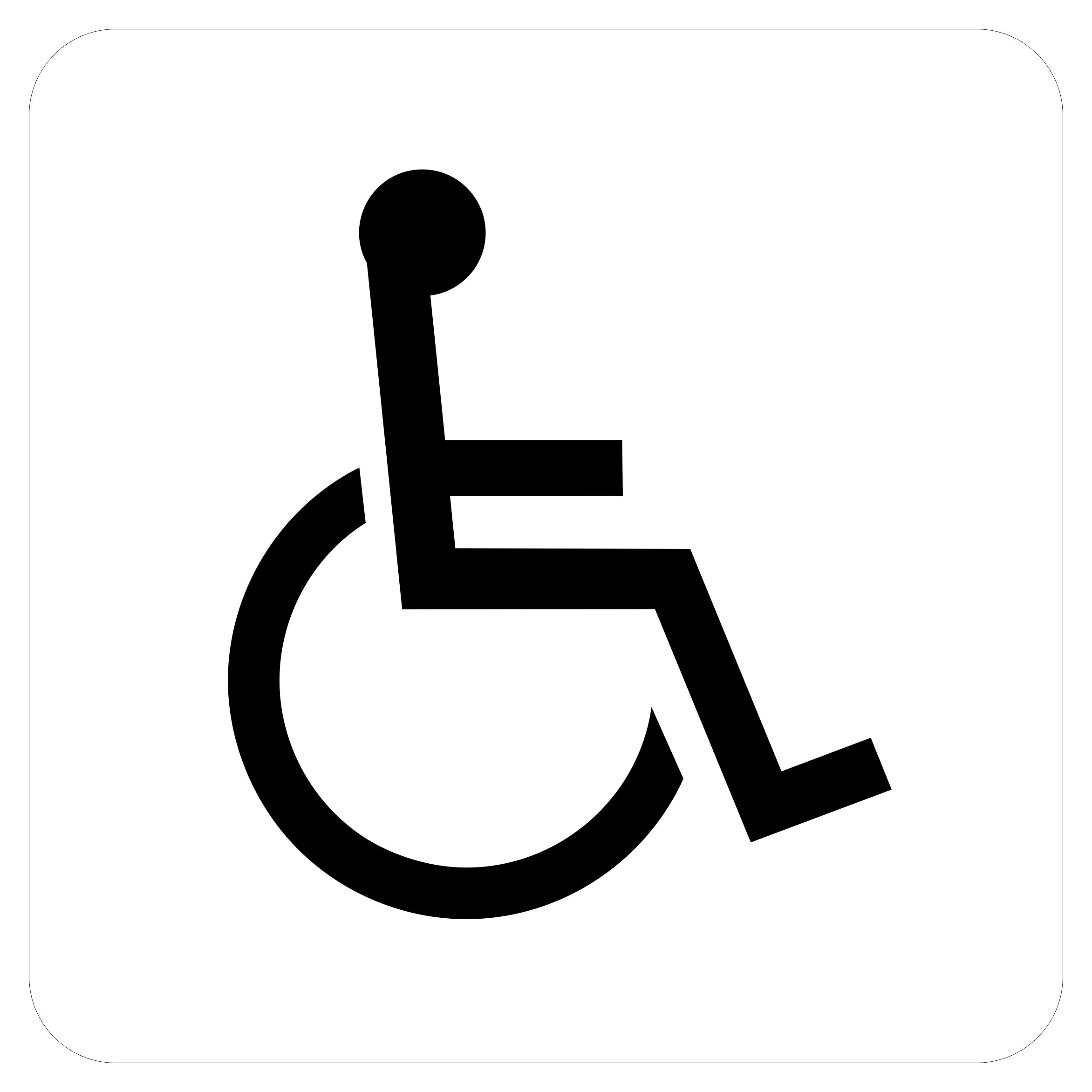The Function of ADA Signs in Following Access Standards
Wiki Article
ADA Signage: Making Certain Availability and Conformity in Public Spaces
ADA signage plays a crucial function in ensuring accessibility and conformity within public areas, substantially adding to an inclusive atmosphere for people with handicaps. By adhering to ADA requirements, signs not just helps with navigating yet also underscores a company's dedication to diversity and equal rights. As we explore the subtleties of ADA signs, from tactile features to develop details, it's crucial to think about how these elements coalesce to maintain the civil liberties of all users. What are the typical pitfalls organizations deal with in preserving conformity, and just how can future fads in signage remain to drive access onward?Relevance of ADA Signs
In modern-day culture, the importance of ADA signage prolongs beyond plain compliance with legal requireds to symbolize a commitment to inclusivity and ease of access for all individuals. These signs are important in creating settings where individuals with impairments can navigate public rooms with the exact same simplicity and self-reliance as those without impairments. By giving clear and standardized info, ADA signage ensures that everyone can access centers, solutions, and information without obstacles.The value of ADA signage depends on its capacity to enhance the top quality of life for people with disabilities by advertising equal access. It gets rid of the obstacles that could otherwise prevent their capability to participate totally in community life. Furthermore, these indicators function as noticeable indicators of a company's dedication to variety and equality, mirroring wider social values that promote the rights and dignity of all people.
Furthermore, ADA signs plays a vital function in public safety. By assisting people to exits, bathrooms, and various other important centers, it guarantees that all individuals, despite physical ability, can evacuate securely throughout emergencies. In recap, ADA signage is not simply a regulatory requirement however an effective device for promoting a fair and inclusive culture.
Trick Elements of Compliance

Placement is vital; signs should be set up in areas that are reachable and easily visible. Generally, signage ought to be placed in between 48 and 60 inches from the ground to make sure availability for both standing and mobility device individuals. Tactile components, such as Braille, are essential for people with aesthetic disabilities, supplying vital details in a non-visual layout.
High-contrast shades between the text and history are needed to enhance readability for individuals with low vision. The ADA mandates specific comparison ratios to guarantee clarity. In addition, character size is a vital consideration, with minimal elevation needs determined by the seeing distance to make certain readability from different angles.
Design Factors To Consider for Availability
Designing obtainable signs needs a careful strategy to ensure it meets the demands of all users, specifically those with impairments. This entails thinking about various style elements that improve readability and usability. Key elements include the option of font, color comparison, and tactile attributes. Fonts need to be sans-serif, with straightforward and clear letterforms, to assist in very easy reading. The dimension of the message is just as critical, with ADA guidelines advising a minimum elevation based on viewing distance to make certain legibility.Contrasting shades in between message and background are important for visibility, especially for individuals with aesthetic problems. A high comparison proportion aids identify the text from its history, improving readability under numerous lights problems. In addition, responsive components, such as Braille and increased personalities, are vital for individuals who are blind or have reduced vision. These elements should be located at a consistent height and position to guarantee easy access and comprehension.
In addition, the positioning of signage plays a considerable role in accessibility. Signs need to be mounted in locations that are conveniently reachable and unhampered. Making certain that signs is mounted at proper heights and angles allows all individuals, consisting of those making use of wheelchairs, to interact with them effectively.
Usual Errors to Avoid

One more prevalent mistake is the incorrect positioning of signs. ADA standards specify specific height and investigate this site area requirements to make certain that signs are conveniently visible and obtainable by all individuals, consisting of those using mobility devices. Neglecting these standards not only hampers availability yet also takes the chance of non-compliance with legal requirements.
In addition, not enough contrast between message and background is a regular oversight. Adequate contrast is necessary for readability, especially for people with low vision. Designers often pick colors that are visually attractive yet do not have the needed comparison, providing the text challenging to determine.
Last but not least, some designers stop working to include tactile aspects, such as Braille, which are essential for people who are blind. Omitting these features not just results in non-compliance with ADA guidelines yet additionally restricts access for a section of the population that depends on responsive details.
Future Trends in Signs
Developments in modern technology and increasing awareness of inclusivity are shaping the future trends in signage design. As society becomes extra mindful of diverse needs, the combination of wise modern technologies into signs is gaining grip. Digital signs, for example, is evolving to include interactive features and real-time updates, which can be crucial in supplying dynamic details in public areas. These indicators usually incorporate touch screens or gesture-based controls, enabling users to browse material tailored to their particular requirements.An additional emerging fad is the usage of augmented truth (AR) to boost individual experience. AR-enabled signs can overlay digital info onto the physical environment, supplying aesthetically impaired people with auditory or haptic feedback. ADA Signs. This innovation not just enhances accessibility yet also produces an engaging experience for all individuals
Sustainability is additionally a significant aspect affecting signs trends. Green materials and energy-efficient illumination remedies are being prioritized to line up with international environmental objectives. Innovations in products science are leading to the development of more weather-resistant and sturdy indicators.
Conclusion
ADA signs plays a crucial function in assuring availability and compliance within public rooms by incorporating tactile aspects, high-contrast colors, and calculated positioning. The adherence to ADA criteria not just facilitates safe navigation for individuals with impairments however likewise represents an organization's commitment to variety and inclusivity. By preventing common errors and accepting future patterns, public areas can remain to advance these values, guaranteeing that the civil liberties and self-respect of all people are valued and maintained.ADA signs plays a crucial duty in guaranteeing ease of access and compliance within public spaces, dramatically adding to a comprehensive atmosphere for individuals with handicaps. As we discover the subtleties of ADA signage, from tactile attributes to create ins and outs, it's important to consider how these elements integrate to support the rights of all customers.In contemporary society, the value of ADA signs extends past simple conformity with lawful mandates to personify a commitment to inclusivity and accessibility for all people. By offering clear and click this site standardized details, ADA signage ensures that everybody can access facilities, solutions, and information without obstacles.
ADA signage plays a vital duty in ensuring access and compliance within public spaces by integrating tactile aspects, high-contrast colors, Get More Info and critical placement. (ADA Signs)
Report this wiki page